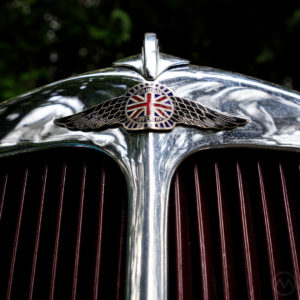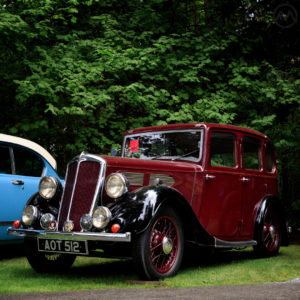“Standard” came to mean something else entirely by the 1950s and mirrored today’s definition of “basic” by the 1960s, but in the early days of the Standard Motor Company, it meant “having standards,” or possibly a heraldic standard – accounts differ.
The venerable Coventry marque was founded in 1903 by gentleman engineer Reginald Maudslay, who gave up a perfectly good (and very respectable) civil engineering career to go into the wild new arena of motorcars.
Born in 1871, Maudslay was old school, and very much an early car pioneer – his instincts served the company well in the veteran days – Standards were popular, reliable, and respected.
But in the more complex market of the 1920s several big missteps led him to bring in new talent – investing in complex engines, misreading the market demands for products, and getting burned on a major export deal. The company was in deep trouble by the late twenties even though the industry overall was booming.
Enter (Sir) John Black

Engineer Alfred Wilde was recruited from Hotchkiss as chief engineer in 1927, and ex-Hillman director John Black, recruited in 1929, became managing director. Black was then married to Daisy Hillman, daughter of company founder William, and didn’t want to work for the Rootes Brothers when they took over Hillman in 1928-29.
Along with Wilde, Black saw to it that the Standard range was built to take on actual market needs – Standard made family cars with fours (mostly) and sixes (sometimes) with simple, easy-to-repair systems. At first, Black’s cost controls meant making do with aging pieces, but they were gradually updated by 1933-34 with new frames, synchromesh, etc.
Black also took a hands-on approach with the workforce, often being a friendly presence on the shop floor in his early days, in contrast to Maudsley. Much later, Black remarked that many workers at Standard had stopped giving feedback to management out of fear by the time he joined.
Rebuilding Mode
From 1929-35, Standard was essentially in rebuild mode – but Black turned the ship around. From making just 34 cars a week in 1929, Standard leapt to 50K cars a year by 1939. In late 1935, the company introduced a series of streamline-styled “flying” 9s, 12s, etc., inspired mainly by GM styling.
Those sleek cars were very popular in Britain and made for a strong recovery for Standard by the time of the war, but this is one of their immediate predecessors – a Standard A-10, built in late 1935.
Or at least, that’s what it’s supposed to be – it has a “9” badge, which suggests it’s actually a 9, but has a larger engine than a 9 at 1,343cc and it’s physically larger too (though, by U.S. standards of the 1930s, this is a tiny car). Since models and specs changed frequently (there were six different tens in 1935), records are thin, and the car was restored in the 1970s, we’ll say it’s an A-10.
British tax regulations, based on cylinder diameter, favored sidevalve engines and Black played to the volume end of the market – “eights,” “nines,” and “tens” were named for the tax HP, which is why so many British manufacturers of that era offered cars with those numbers (Brit readers already know this, but not everybody knows about such cars).

John Black’s arrival at Standard meant he could supply his friend William Lyons with chassis and components for Swallow Sidecar, and later SS, and it was through the gradual success of SS that Jaguar was born.
After the war all but a small number of the pre-war Standard models were dropped, and Black had the good instinct to ink a deal to produce Harry Furgeson’s tractors – which provided a huge stream of black ink, enough to finance a new line of Standards and new products for Triumph, which Standard acquired in 1944 (when it had been almost totally destroyed).
This particular car was supposedly bought new by an RAF pilot, then parked in a barn at the start of the war. It was dragged out in 1969 and gradually restored by a Kentish enthusiast until 1978, when came to Portland, Oregon. It was bought by the famous collector Harold LeMay (of the LeMay – America’s Car Museum) in 1985.
Very few such cars were ever brought to the U.S. new, and this was auctioned by Lucky Auctions at the LeMay Collections at Marymount in September, 2019.

